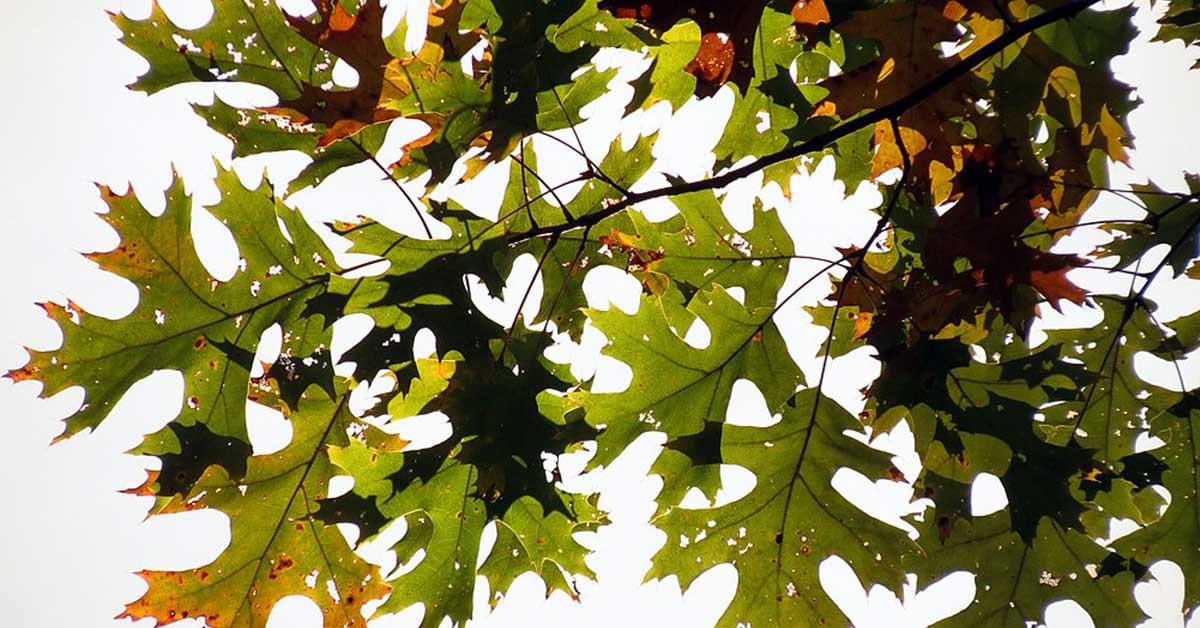Black oak trees are a type of tree native to east and central North America and is extraordinarily common in its native range. It can be found from Maine to Texas and inland toward Michigan and the Great Plains states as well. It is a close relative of the California black oak (Quercus kelloggii). These trees are very large and require a lot of space to grow, but once they’ve reached their full size, they are a tree of epic proportions. They are loved for their fiery red fall leaves that at times can take on a lighter orange hue.
Black oak trees are a good tree to plant if you have lots of space, want a good wind break and shade, and love red fall foliage. In this article, we’ll explore what there is to know about planting and caring for these delightful, giant trees.
Growing black oak trees
Black oak trees are relatively easy to grow, especially in their native range of central and eastern North America. Despite how easily they can be grown, you will improve your odds of successfully growing yourself a tall, happy tree by getting a little background on the tree first.
- Latin name: Quercus velutina
- Other names: Eastern black oak
- Native to: Eastern and central North America
- Invasiveness: No
- Sun: Full sun
- Soil: well-drained, slightly acidic soil
- Hardiness zone: 3-9
- When to plant: Spring
- Spacing: 40+ feet
- Tree height: 150 feet
- Time to maturity: 20 years
- Container friendly: No
- Fertilizer: 12-4-8
- Deer resistant: Undetermined
- Fall color: Red
Black oak trees (Quercus velutina), also sometimes referred to as eastern black oaks, are native to eastern and central North America. They are extremely common in their native range, which stretches from Maine to Texas and well into the great plains and upper midwest. It can live in zones 3 through 9 and is not considered to be an invasive tree outside of its native range.
These trees prefer full sun, well-drained slightly acidic soil, and once established will require little to no additional watering. These oaks grow very large, up to 150 feet, and should be spaced out at least 40 feet from one another. Due to their size, black oak trees are not container friendly. It is unknown how deer resistant they are. Their autumn color is mostly red with patches of orange.
Water
Inside of their native range, black oak trees won’t need any additional water aside from what comes in the form of precipitation. However, younger saplings do benefit from a bit of additional water. This will ensure that the trees are able to survive dry snaps of weather and grow into a big, healthy tree. Water saplings occasionally. Watch for signs of dehydration, like wilting or premature leaf loss.
Sunlight
Unlike white oak trees, which can tolerate a bit of shade, black oak trees want full, direct sunlight. They need a minimum of 6 hours of direct, unfiltered sunlight each day in order to grow into a healthy tree. Plant in a very sunny spot – the sunnier, the better.
Soil
Oak trees in general usually aren’t very picky about the soil they grow in, but the optimal soil for a black oak tree would be well-drained and slightly acidic soil. Providing this soil will yield the best results for you and your tree.
Fertilizing
Mature black oak trees don’t need any kind of additional fertilizer, as they will be able to draw the nutrients they need from the soil they grow in. Younger saplings do benefit from the occasional fertilizing with a 12-4-8 NPK fertilizer. This can be done once, maybe twice a year in spring and summer.
Fall foliage
Black oak trees are highly desirable for their extremely large stature and fiery red and orange leaves in the fall. Other oak trees with red leaves include:
Planting black oak saplings
Black oak saplings should be planted in the spring after the last danger of frost has passed. Planting an oak sapling is easy and straight-forward. Dig a hole as deep as the tree’s root ball and twice as wide. Place the root ball in the hole and fill the surrounding cavity with a mix of soil and compost. Tamp it so that the soil is firm and mulch with a tree bark. Give your sapling a thorough watering when you plant it and continue to water periodically for the first couple years of its life as it gets established.
Propagating black oak trees
Growing a black oak tree of your own is easily done from seed. In the fall, collect acorns that have fallen from a parent tree. Look for acorns that have no bore holes from insects, no cracks, or discernable damage. Plant your acorn about an inch deep in a container with potting soil and leave outdoors over winter. If you go through a dry period, provide a bit of extra water to your acorn.
After going through the winter, your oak tree will sprout in the spring. It’s recommended that you plant a handful of acorns for every tree you want to grow, as not every acorn will be viable.


